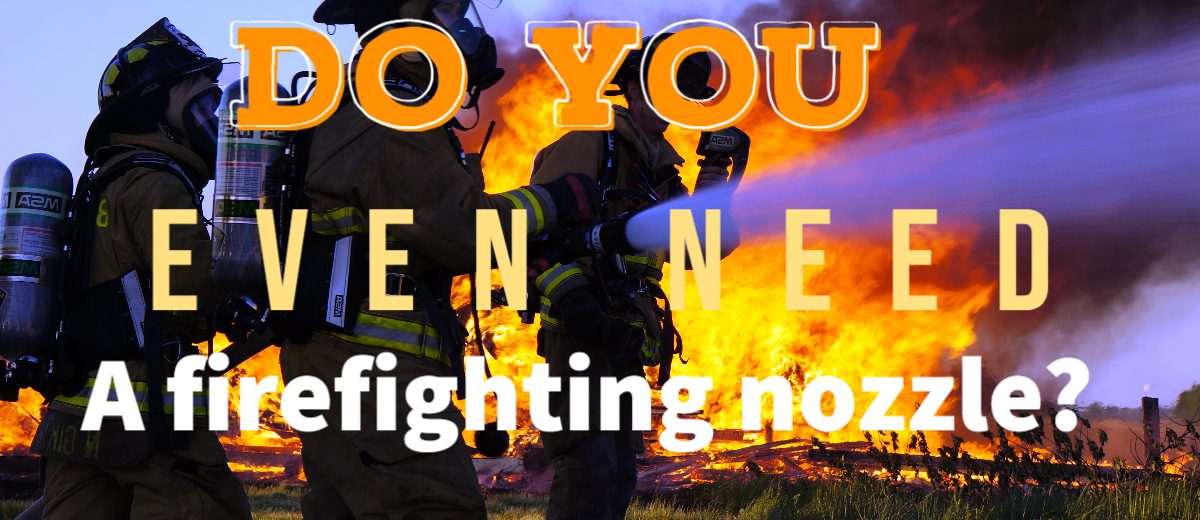Smoothbore, selectable, or automatic nozzle…Why have a nozzle?
Do you even need a firefighting nozzle?
Whether a rookie or a salty veteran of the fire service, it is safe to say 200 GPM is a heck of a flow rate that would put out a lot of fire if applied properly. This is no secret. If you dig into the majority of UL Fire Safety Research Institutes (UL-FSRI) studies, almost all the live fire experiments use 150 GPM exclusively as the targeted flow rate.
If you put an average ball valve shut-off on the end of an 1-3/4” hose line, 200 GPM or more is delivered easily with the pump at idle or slightly above. If you’re able to deliver 200 GPM at only idle engine pressure, why do you even need a nozzle?
Nozzles Build Pressure
Every smoothbore (fixed), fixed (fog), selectable, or automatic nozzle is a restriction that builds pressure. Your chosen restriction builds a certain amount of pressure at a specific flow rate and this results in stream reach, penetration, and hose line manageability. You keep all of this in balance to accomplish your ultimate goal of putting the fire out and making survivable space in the fastest way possible.
Let’s crunch some basic numbers. Given 200 GPM flowing from a ball valve shut-off, the nozzle pressure is only around 13 psi! An adequate flow rate of 200 GPM is there, but the pressure is not. This means as you advance your hose line, it is uncontrollable, similar to a wet spaghetti noodle. This rings true even on the most kink resistant, low-pressure performance hose available today. It’s extremely difficult to manage the line effectively in this scenario. Furthermore, you may not reach your intended target and you likely won’t get the penetration you are accustomed to with your favorite nozzle at its unique rated flow and pressure.
Your targeted flow rate, the amount of water, GPM/LPM or whatever you choose to refer to it as, is ultimately what puts out the fire. An adequate amount of water is absolutely required to be applied properly in order to overcome the BTU’s being generated by the fire. However, pressure cannot be ignored for many reasons as we’ve discussed above. A key takeaway here is that it is a delicate balance of variables needed to achieve your most effective, safe firefighting attack line for fire departments considering the response hazards you face every single day.
